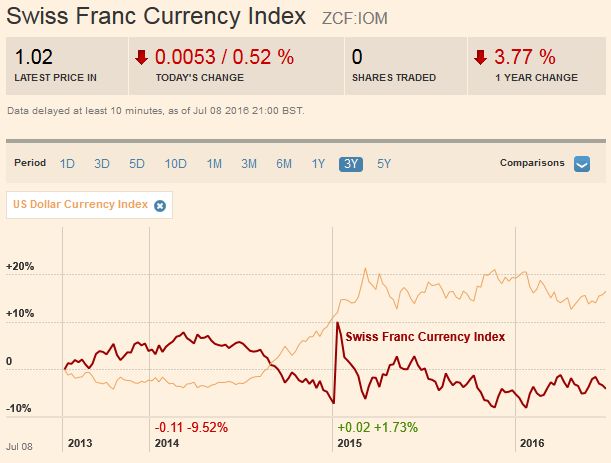Summary:
Numerous events converge in the middle of March.
We still lean toward a May hike rate than March.
Wilders may garner a plurality of the vote in the Netherlands, but is unlikely to form a government for want of coalition partners.
How will the Republican US Congress and President deal with the debt ceiling?
 T.S. Eliot tells us that April is the cruelest month. A great poet he was, but a trader he was not. Caesar was warned about the Ides of March, and investors may find the caution to be particular apropos now. Consider the congestion of events around March 15.
T.S. Eliot tells us that April is the cruelest month. A great poet he was, but a trader he was not. Caesar was warned about the Ides of March, and investors may find the caution to be particular apropos now. Consider the congestion of events around March 15.
A few days before, March 9 is ECB meeting. Although no policy change is likely, the press conference often elicits a market response. Headline inflation is moving toward the target, though core inflation remains stable and just a little above the 0.6% trough. Still, the risks of deflation have all but disappeared, while growth looks solid and above trend.
The following day the US reports February employment figures. The early call is for a modest slowing of net new jobs from 237k in January to 178k. Such a report would still be solid and above any month in Q4 16. The three- and six-month averages have converged at 183k. Investors will also focus average hourly earnings. The median is a 0.2% increase, which given the base effect (flat report last February), is consistent with an increase in the year-over-year pace back toward 2.7% where it was in the September 2016-November 2016 period. It then ticked up to 2.8% in December before falling back to 2.5% in January.
On March 15 itself, the FOMC meets, and the Dutch hold the first European election of 2017. The market perceives an increased risk of a rate hike at the March meeting. However, in our ranking of Fed signals, we put more weight on the FOMC statement and the speeches by the Fed’s leadership than the regional presidents, many of whom seem more anxious to normalize monetary policy. We do not see the FOMC statement or the minutes from the last meeting indicating a rate hike. The word cues were different than before the December 2015 or December 2016 meetings.
The idea that there is not strong urgency and that the Fed’s leadership does not think that the central bank is behind the curve informs our leaning against a March move. May remains interesting in our view as it would allow the Fed to recapture the full range of meetings rather than just the four that update forecasts and are followed by a press conference. March may be too soon and June too late.
The populist-nationalist party candidate Wilders may garner a plurality of votes in the Dutch elections, and while this in itself is a feat, it still does not appear he will be able to find sufficient coalition partners to cobble together a government. As we have noted, the success of populist-nationalists in the US and UK were functions of the main center-right party adopting their program rather than the populist-nationalists winning outright. Note that UKIP lost a byelection last week in a district that voted heavily for leaving.
The formation of a coalition government in the Netherlands may require the inclusion of a few smaller parties, which could make for a less stable arrangement. The markets do not seem particularly concerned. Consider that the Dutch two-year yield is off 20 bp over the past month, while German two-year yield is off 24 bp. Although the record low German yield grabbed attention, the Dutch yield also fell to a record low of 84 bp (February 24).
Two days later, on March 17, the US debt ceiling will be reached. In the past, the raising of the debt ceiling has been used by Congress to try to get concessions from the President. The Trump Administration is composed of different views, perhaps more so than other recent administrations. The Treasury Secretary appreciates that making timely debt payments is critical. The head of the Office of Management and Budget and the President himself have talked about renegotiating the debt and/or prioritizing payments.
How the Republican Congress and Republican President deal with the debt ceiling is important. The passing of March 17 deadline without a deal is not necessarily problematic. By the end of the month, though extraordinary measures may begin being required. These could include postponing making retirement contributions for federal employees, among other things. Such measures and the cash on hand could be enough to stretch through most of the Q2. The spending authorization limit is not seen being reached until the second half of April.
The G20 finance ministers and central bankers will meet on March 17-18. It will be the first to be attended by US Treasury Secretary Mnuchin. He will likely be the focus of attention. He will likely be urged to be more careful when talking about exchange rates. The undervaluation of the euro now that the US has noted needs to be placed in the larger context. It was overvalued against the dollar for more than a decade (2003-2014).
In addition to these events around the middle of March, the ongoing discussion of US fiscal policy, and the looming French elections, and the formal triggering of Article 50 to being the UK’s amputation from the EU body will make for more turbulent waters in the foreign exchange market. Foreign exchange participants also will have to navigate around the quarter IMM expirations.
Forewarned is to be forearmed. Beware the Ides of March.
Full story here Are you the author? Previous post See more for Next post
Tags: #GBP,#USD,$EUR,newslettersent







































